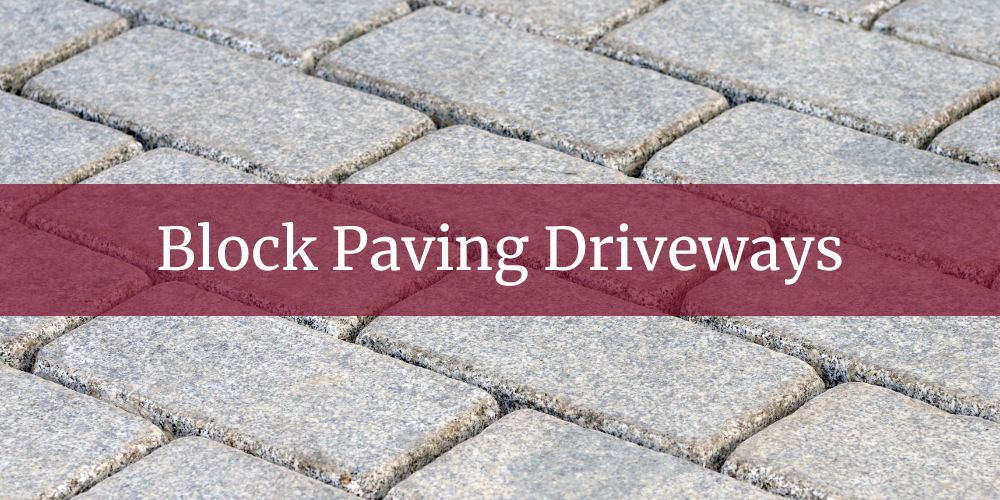Driveways Chelmsford provide block paving driveways across Chelmsford and the surrounding area. We install durable, well-detailed block paving in a wide choice of colours, patterns, and borders. Our team manages design, groundworks, and drainage to create a long-lasting, low-maintenance surface. Book a free survey and quote anywhere in Chelmsford and nearby Essex villages. Block paving driveways are surfaces built from individual concrete or clay blocks laid on sharp sand over a properly compacted sub-base. Interlocking patterns such as herringbone, stretcher bond, or basket weave distribute loads, making them strong enough for cars and frequent use. Falls, edging, and drainage are set during installation; permeable block systems can be SUDS-compliant to let water soak away. They’re durable, easy to repair by lifting and relaying blocks, highly customisable with colours and borders, and benefit from simple upkeep like sweeping and occasional re-sanding or sealing.
What Are Block Paving Driveways?
Block paving driveways are surfaces built from individual concrete or clay blocks laid on sharp sand over a properly compacted sub-base. The blocks interlock in patterns like 45°/90° herringbone, stretcher bond, or basket weave to spread vehicle loads and resist movement. In Chelmsford, Essex, they suit everything from period homes in Old Moulsham to newer developments in Springfield, Beaulieu, and Channels. Installations are set to accurate levels with kerb edging, recessed manhole covers, and drainage; permeable options can meet SUDS requirements where needed. A wide choice of colours and textures lets you match local brickwork or add tasteful borders that enhance kerb appeal without clashing with Chelmsford’s streetscapes. Maintenance is simple, sweep, re-sand joints, and occasionally seal. This makes block paving a durable, repairable choice for driveways across the city and nearby villages.
Have a question about an upcoming project?
What Are The Benefits Of Having A Block Paving Driveway In Chelmsford?
Block paving driveways are a smart choice for Chelmsford homes, combining strong kerb appeal with everyday practicality. Interlocking blocks spread vehicle loads, delivering a durable surface that handles daily parking with ease. Individual blocks can be lifted and relaid, so repairs are simple and tidy without visible patches. Permeable block systems also support SUDS-friendly drainage, cutting puddles during Essex downpours and keeping upkeep low.
- Kerb appeal & design choice
- Durability & load distribution
- Simple, tidy repairs
- SUDS-friendly drainage (permeable options)
- Low maintenance & long service life
1. Kerb appeal & design choice
Block paving gives instant kerb appeal, with colours and textures that complement Chelmsford’s varied housing—from period terraces in Old Moulsham to new builds in Beaulieu and Channels. You can pick classic herringbone, stretcher bond, or basket-weave patterns, and add borders or contrasting edgings for a crisp frame. Recessed manhole covers and matching paths keep the look seamless and tidy. The result is a tailored finish that feels purpose-made for your street and architecture. You can also mix tones—e.g., charcoal or brindle borders around a mid-grey field—to echo local brickwork and window frames, or choose clay pavers for richer, long-lasting colour. Design extras like soldier-course steps, radial cuts around planters, feature aprons near the entrance, and subtle driveway lighting elevate the look while guiding visitors. For a more contemporary feel in Springfield or Channels, larger-format blocks with straight lines and minimal colour variation create a sleek, modern approach.
2. Durability & load distribution
Interlocking blocks spread vehicle loads effectively, helping the driveway resist rutting and movement under daily parking. When installed over a well-compacted MOT Type 1 sub-base (typically 150–200 mm for cars, more for heavier use) and a 30–50 mm sharp-sand bedding layer, block paving stands up to Chelmsford’s year-round use and mixed weather. The modular pattern also handles turning circles and frequent access without scuffing like some continuous surfaces—45° or 90° herringbone is especially good where cars turn or brake. Block thickness can be matched to use: 50 mm for standard domestic driveways, 60–80 mm where vans or frequent deliveries are expected, with concrete-haunched edging to lock everything in. Jointing with kiln-dried sand (and periodic re-sand) maintains interlock, while permeable systems use an open-graded sub-base to manage water without sacrificing strength. It’s a robust, long-lasting option for family cars, work vehicles, and everyday comings and goings across Chelmsford and nearby villages.
3. Simple, tidy repairs
If a section settles or gets stained, individual blocks can be lifted with a block puller, the bedding adjusted, and the same blocks relaid—so the repair blends perfectly with the original. Typical fixes involve re-levelling the sharp-sand (or permeable grit) bedding, compacting with a plate wacker, and checking falls so water still runs away from the house. Stains (oil, rust, algae) can often be treated with targeted cleaners; if not, you can simply swap a few blocks from on-site spares or a discreet area. Accessing services is straightforward too: lift, carry out the work, relay—ideal for new EV charger cables, drainage upgrades, or inspection chamber changes. Because repairs are localised, disruption is minimal and your driveway keeps a uniform, patch-free appearance—a big advantage over continuous surfaces.
4. SUDS-friendly drainage (permeable options)
Permeable block paving uses a no-fines, open-graded build-up—typically a Type 3 sub-base (e.g., 4/20), a 2/6 mm grit bedding, and 2–4 mm jointing—to let rain pass through the surface into the sub-base. That sub-base acts like a reservoir, attenuating stormwater during Essex downpours and reducing runoff to the road; it can be designed as infiltration (soak into the ground) or as a tanked system with a controlled outlet. Geotextile/separator layers keep fines out, while edge restraints maintain interlock; threshold channels, soakaways and rain gardens can be added where plots need extra help. In parts of Chelmsford with heavier soils, designers often combine permeable paving with an appropriately sized soakaway (e.g., BRE 365-style calculations) to manage peak events. Regular vacuum sweeping (or low-pressure rinsing) keeps joints free-draining so the system stays effective year after year.
5. Low maintenance & long service life
Routine care is simple: sweep to remove debris, treat the odd weed, and top up kiln-dried sand (or permeable joint grit) when joints look low after heavy rainfall or cleaning. Optional sealing can reduce staining and slow moss growth, but well-made block paving performs without it; if you do seal, use breathable products and only after the surface is clean and dry.
When washing, use low pressure and re-sand joints afterwards to maintain interlock; check edges annually for movement and re-haunch if needed. Because the system is modular and repairable, small issues never escalate—individual areas can be corrected long before a full refurbishment is ever considered. With a correctly compacted sub-base, proper edging, and sensible upkeep, block paving routinely delivers a service life measured in decades across Chelmsford and nearby villages.


